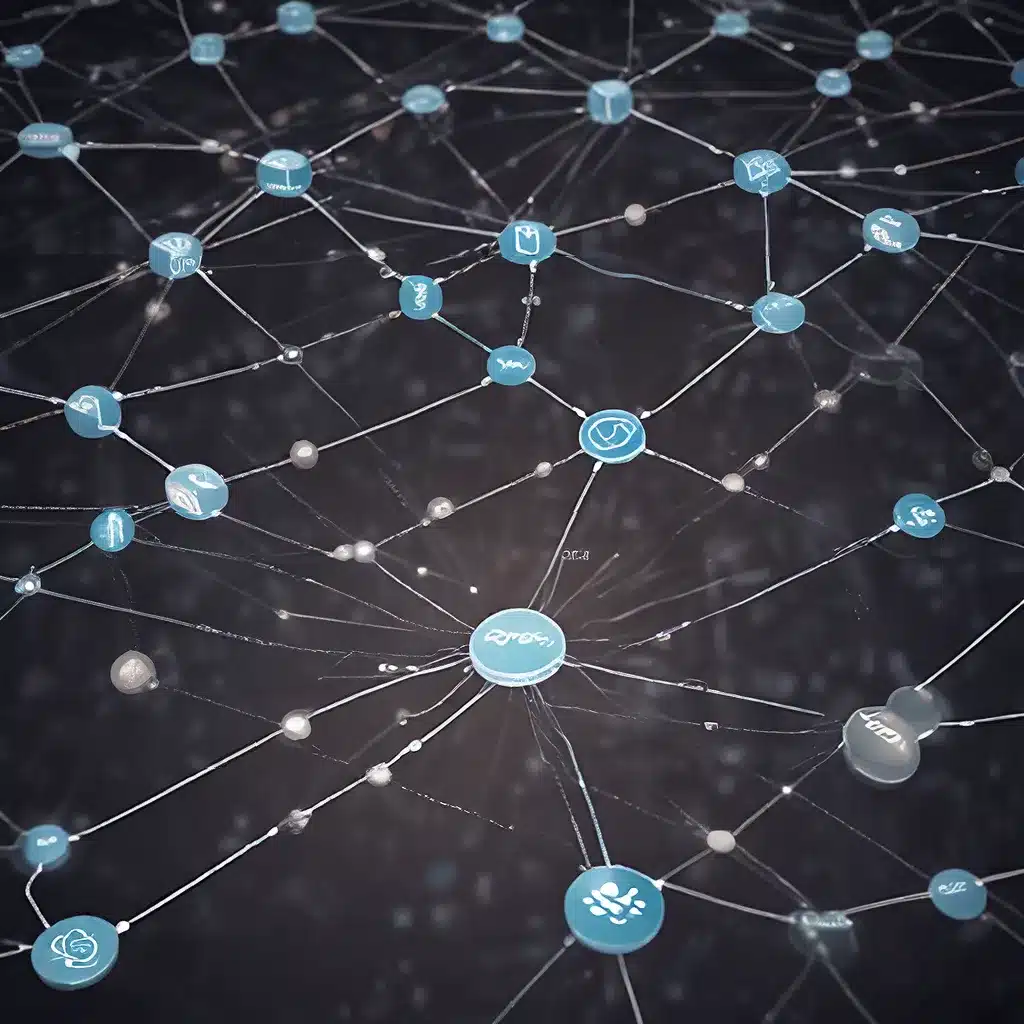
Navigating the Complexity of Sensor Networks in the IoT Landscape
In the ever-evolving landscape of the Internet of Things (IoT), sensor networks have emerged as a critical component, enabling a vast array of applications, from industrial automation to smart city infrastructure. As these networks become increasingly complex and distributed, the need for robust, self-healing, and resilient solutions has become paramount.
Sensor networks in IoT environments often face unique challenges, such as dynamic topologies, resource constraints, and the potential for security vulnerabilities. To address these challenges, researchers and practitioners have turned to distributed algorithms as a promising approach, leveraging the inherent advantages of decentralized decision-making and self-organization.
Exploring Distributed Constraint Satisfaction Problems (D-CSPs)
One area of research that has gained significant attention in the context of sensor networks is the notion of Distributed Constraint Satisfaction Problems (D-CSPs). In a D-CSP, the goal is to find a set of variable assignments that satisfy all constraints among agents, where each agent represents a node or sensor within the network.
However, when real-life applications, such as those found in IoT, are considered, these problems become increasingly complex. Factors like dynamic topologies, resource constraints, and the potential for failures or malicious attacks can disrupt the smooth operation of the network.
To address these challenges, researchers have proposed the concept of k-resilient distribution of graph-structured computations, which aims to support agent decisions over dynamic and physical multi-agent systems. This approach involves replication-based self-organizing distributed repair methods, such as the DRPMMGM-2 algorithm, to ensure the resilience and self-healing capabilities of the sensor network.
Designing Resilient and Self-healing Sensor Networks
The design of resilient and self-healing sensor networks in IoT environments requires a multifaceted approach, addressing various aspects of the system, including:
- Network Topology and Distributed Algorithms:
- Exploring dynamic network topologies and how they impact the performance and resilience of sensor networks.
- Developing distributed algorithms that can adapt to changes in the network, such as node failures or the addition of new sensors.
-
Incorporating self-organization and self-healing mechanisms to enable the network to recover from disruptions.
-
Energy Management and Optimization:
- Addressing the resource constraints of sensor nodes, particularly in terms of energy consumption.
- Designing energy-efficient protocols and algorithms to prolong the lifetime of the sensor network.
-
Exploring energy harvesting techniques and dynamic load balancing to optimize the utilization of available resources.
-
Security and Privacy Considerations:
- Identifying and mitigating security vulnerabilities that can compromise the integrity of the sensor network.
- Implementing secure communication protocols and access control mechanisms to protect the network from cyber threats.
-
Ensuring data privacy and confidentiality in IoT sensor networks, especially when dealing with sensitive information.
-
IoT Applications and Use Cases:
- Examining the diverse applications of sensor networks in the IoT domain, such as smart cities, industrial automation, and environmental monitoring.
- Highlighting real-world use cases and case studies that demonstrate the impact of resilient and self-healing sensor networks.
- Exploring the future potential of sensor networks in emerging IoT technologies and services.
Practical Insights and Advancements
To illustrate the practical applications and advancements in sensor network design, let’s consider the example of a smart city deployment. In a smart city, sensor networks are used to monitor and manage various city infrastructure, such as traffic, energy grids, and waste management systems.
In this scenario, the resilience and self-healing capabilities of the sensor network become crucial. Distributed algorithms, such as DRPMMGM-2, can help ensure that the network can adapt to changes and recover from disruptions without compromising the overall functionality of the smart city system.
Furthermore, energy management becomes a critical consideration, as sensor nodes in a smart city deployment may be powered by limited battery resources or require energy harvesting techniques to maintain their operation. Optimizing energy consumption and leveraging dynamic load balancing can significantly extend the lifetime of the sensor network and improve the sustainability of the smart city infrastructure.
Additionally, the security of the sensor network is paramount, as it can potentially be a target for cyber attacks. Implementing secure communication protocols and access control mechanisms can help protect the network from unauthorized access and ensure the privacy of the data collected by the sensors.
As the IoT ecosystem continues to evolve, the role of sensor networks is poised to become even more critical. Researchers and practitioners are actively exploring new frontiers, such as edge computing, fog computing, and 5G networks, to further enhance the capabilities and resilience of sensor networks in IoT applications.
Conclusion
In the dynamic and interconnected world of the Internet of Things, sensor networks have emerged as a fundamental component, enabling a wide range of applications and services. However, the complexity and challenges inherent in these networks require innovative solutions to ensure their resilience and self-healing capabilities.
Through the adoption of distributed algorithms, energy-efficient designs, and robust security measures, sensor networks in IoT can be transformed into resilient and adaptable systems, capable of supporting the evolving needs of modern technologies and services. As the field of sensor networks and IoT continues to progress, these advancements will undoubtedly play a crucial role in shaping the future of our interconnected world.
To stay up-to-date with the latest developments in sensor networks and IoT, we invite you to explore the content available on sensor-networks.org, where you can find a wealth of resources, expert insights, and cutting-edge research.